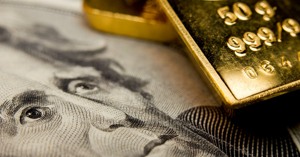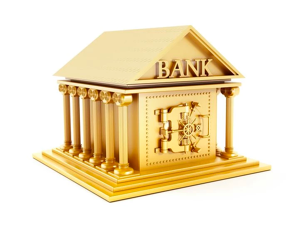Tavex uses cookies to ensure website functionality and improve your user experience. Collecting data from cookies helps us provide the best experience for you, keeps your account secure and allows us to personalise advert content. You can find out more in our cookie policy.
Please select what cookies you allow us to use
Cookies are small files of letters and digits downloaded and saved on your computer or another device (for instance, a mobile phone, a tablet) and saved in your browser while you visit a website. They can be used to track the pages you visit on the website, save the information you enter or remember your preferences such as language settings as long as you’re browsing the website.
| Cookie name | Cookie description | Cookie duration |
|---|---|---|
| tavex_cookie_consent | Stores cookie consent options selected | 60 weeks |
| tavex_customer | Tavex customer ID | 30 days |
| wp-wpml_current_language | Stores selected language | 1 day |
| AWSALB | AWS ALB sticky session cookie | 6 days |
| AWSALBCORS | AWS ALB sticky session cookie | 6 days |
| NO_CACHE | Used to disable page caching | 1 day |
| PHPSESSID | Identifier for PHP session | Session |
| latest_news | Helps to keep notifications relevant by storing the latest news shown | 29 days |
| latest_news_flash | Helps to keep notifications relevant by storing the latest news shown | 29 days |
| tavex_recently_viewed_products | List of recently viewed products | 1 day |
| tavex_compare_amount | Number of items in product comparison view | 1 day |
| Cookie name | Cookie description | Cookie duration |
|---|---|---|
| chart-widget-tab-*-*-* | Remembers last chart options (i.e currency, time period, etc) | 29 days |
| archive_layout | Stores selected product layout on category pages | 1 day |
| Cookie name | Cookie description | Cookie duration |
|---|---|---|
| cartstack.com-* | Used for tracking abandoned shopping carts | 1 year |
| _omappvp | Used by OptinMonster for determining new vs. returning visitors. Expires in 11 years | 11 years |
| _omappvs | Used by OptinMonster for determining when a new visitor becomes a returning visitor | Session |
| om* | Used by OptinMonster to track interactions with campaigns | Persistent |
| Cookie name | Cookie description | Cookie duration |
|---|---|---|
| _ga | Used to distinguish users | 2 years |
| _gid | Used to distinguish users | 24 hours |
| _ga_* | Used to persist session state | 2 years |
| _gac_* | Contains campaign related information | 90 days |
| _gat_gtag_* | Used to throttle request rate | 1 minute |
| _fbc | Facebook advertisement cookie | 2 years |
| _fbp | Facebook cookie for distinguishing unique users | 2 years |

Gold just completed its best two-quarter stretch in 8 years on its way to a record high of $2,319 per ounce today. In February 2024 Goldman Sachs predicted that gold prices would rise 6% in the next 12 months.
In the world of investments, few commodities hold as much allure and intrigue as gold. Its timeless appeal as a store of value has made it a favourite among investors seeking to hedge against economic uncertainty. However, recent years have seen significant fluctuations in the price of gold, leaving many to wonder: will the gold price continue to rise?
Historical Trends of Gold Prices
The past few decades have seen some significant fluctuations in the price of gold. The 1970s lows were followed by an all-time high in 1980.
In early April 2024, gold reached a record high of $2,319 per ounce, with it constantly reaching new highs daily
But the early 1980s remain a gold high when inflation has been taken into account.
Over the years, gold prices have experienced periods of significant volatility, with highs and lows driven by a myriad of factors. From economic recessions to geopolitical tensions, historical data provides valuable insights into the factors influencing gold prices. With recent interest rate decisions being made by The Federal Reserve, in the United States, this could have an impact into the future of gold prices in 2024.
Recent Gold Price Movements

In recent times, gold prices have exhibited both upward and downward movements as an asset in the financial market.
The COVID-19 pandemic, along with unprecedented stimulus measures, initially fuelled a surge in gold prices
In this time investors sought safe-haven assets and a stable asset for economic stability whilst also gaining economic growth opportunities. Additionally, the recent conflict between Israel and Palestine have caused significant changes in the gold price.
In the first week of October, the Palestinian resistance group Hamas fired 5,000 rockets into Israeli territory, in an unprecedented series of strikes on Israel. After then, the price of gold started to increase swiftly, reaching $1,861 the following trading day, up 1.6 percent. The price of an ounce rose further in the days that followed, hitting $1,947 a week and a half after the assaults.
Current Factors Affecting Gold Prices

The current landscape is rife with factors impacting gold prices.
Economic indicators such as inflation, interest rates, and currency fluctuations play a pivotal role in determining the direction of gold prices. Additionally, geopolitical events, such as trade tensions and political unrest, can send shockwaves through the gold market. This means that often the World Gold Council has to work across all parts of the industry, from mining to investing in gold, to ensure stimulating and sustainable demand for gold throughout the market. Furthermore, the monetary policies of central banks can have a profound impact on investor sentiment towards gold.
Central Banks Influence in the Gold Price

Central banks, pivotal institutions within the financial landscape and global economy, wield significant influence over monetary policies and economic stability in the financial system. According to Goldman Sachs Research, gold prices are expected to continue to grow as central banks buy the precious metal and as robust retail demand in emerging nations supports prices.
By acting as a reserve asset, gold helps to diversify the holdings of central banks and improve financial stability and economic activity. In contrast to fiat currencies or assets attached to the stock market, which are susceptible to geopolitical unrest and inflation, gold maintains its fundamental value over time, making it a dependable store of wealth in the short term and long term.
Between 2022 and 2023, central banks purchased 1,060 tonnes on average, as opposed to 509 tonnes between 2016 and 2019. The increase coincides with Poland and other nations increasing their gold stockpiles as well as China shifting its reserves away from US currency.
Persistent economic uncertainties, coupled with expansive monetary policies, could fuel supply and demand for gold as a safe-haven asset. Additionally, supply constraints and geopolitical tensions may further bolster gold prices in the coming months.
Factors Suggesting a Decline in Gold Prices
Conversely, there are factors that could potentially lead to a decline in gold prices.
A swift economic recovery, accompanied by tightening monetary policies, could dampen investor appetite for gold
Moreover, a resolution to geopolitical conflicts or a slowdown in inflationary pressures could undermine the bullish case for gold.
Key Takeaways
Given the recent trends and various influencing factors discussed, the question of whether the gold price will continue to rise remains uncertain. However, recent events such as the record-breaking performance of gold in the past two quarters and predictions from financial institutions like Goldman Sachs suggest a positive outlook for gold prices in the near future.
Gold’s status as a safe-haven asset during times of economic uncertainty, coupled with ongoing geopolitical tensions and central bank policies supporting gold purchases, provide a strong foundation for potential continued growth in gold prices.
Despite these bullish indicators, it’s essential to acknowledge the potential risks and factors that could lead to a decline in gold prices, such as a rapid economic recovery, tightening monetary policies, or resolutions to geopolitical conflicts.
In conclusion, while the future trajectory of gold prices may be subject to fluctuations and uncertainties, the current landscape suggests a favourable outlook for gold investors. Monitoring key economic indicators, geopolitical developments, and central bank actions will be crucial in assessing and navigating the dynamics of the gold market in the coming months.


















